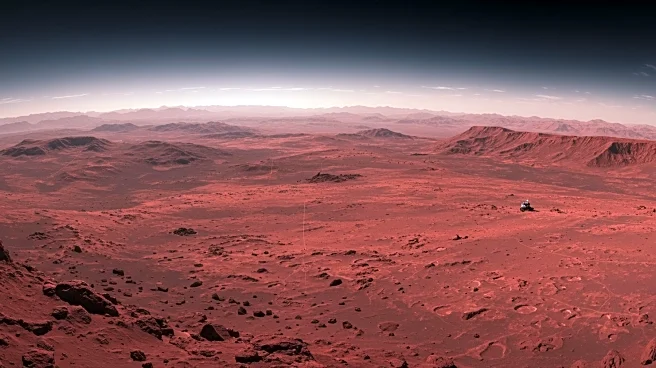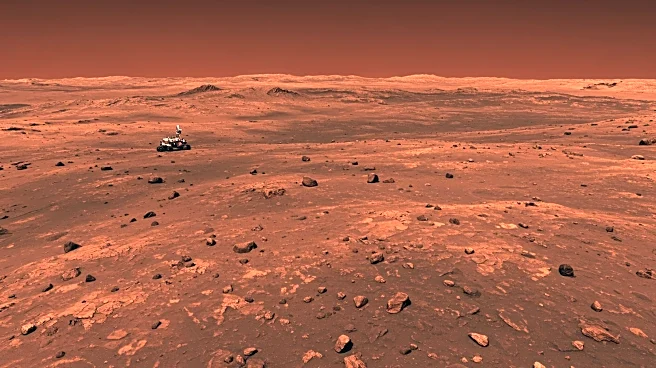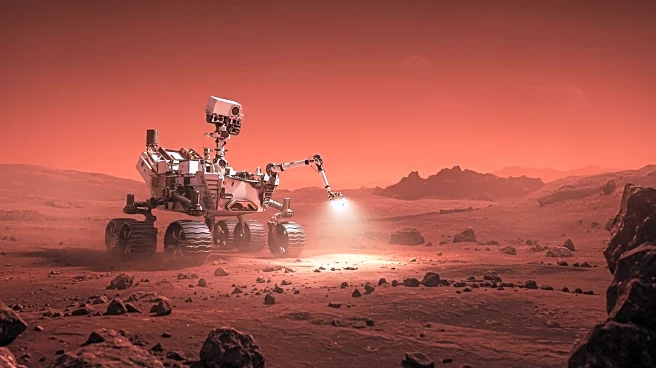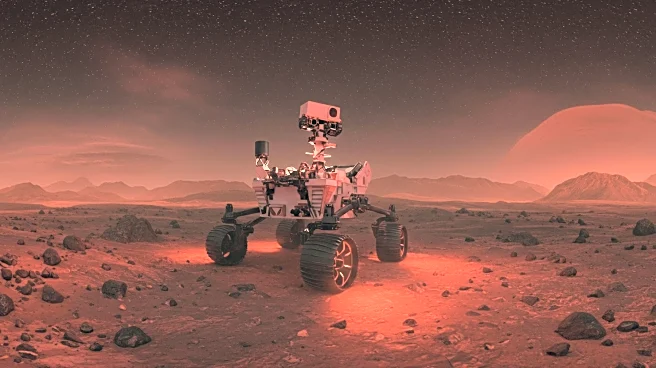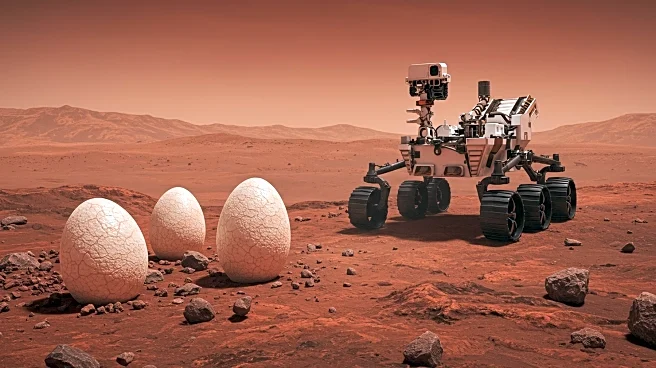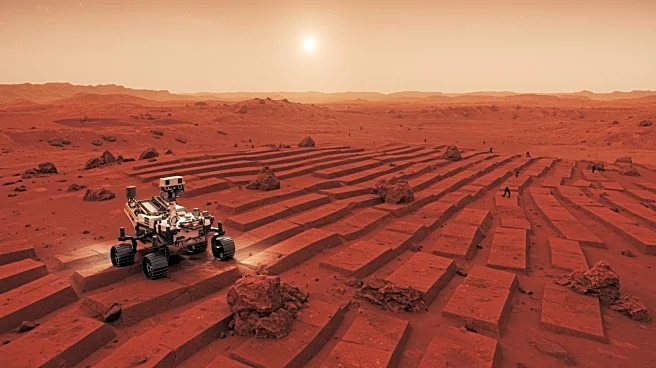Rapid Read • 8 min read
NASA's Perseverance rover has captured a striking panoramic image of Mars, showcasing the Martian landscape under a sky that appears deceptively blue due to color-enhancing technology. This image, released in August, is described as one of the sharpest panoramas of the rover's mission. Perseverance has been exploring the Jezero Crater since 2021, a site believed to hold clues about ancient life on Mars. The rover's mission involves collecting rock samples, many of which are stored for future retrieval. The enhanced image was created by processing color bands to improve visual contrast, offering a view of Mars that resembles Earth's skies.
AD
The enhanced images from Perseverance provide valuable insights into the Martian environment, aiding scientists in understanding the planet's geology and potential for past life. The ability to visualize Mars with Earth-like skies helps in engaging the public and fostering interest in space exploration. The rock samples collected by Perseverance are of significant interest to NASA and the European Space Agency, as they plan to retrieve these samples for further study on Earth. This mission is a critical step in preparing for future human exploration of Mars, as it helps identify potential resources and hazards.
NASA and the European Space Agency are working on plans to retrieve the rock samples collected by Perseverance. This retrieval mission is a precursor to human exploration, as it will provide essential data on Mars' surface conditions. The continued exploration of the Jezero Crater and its rim by Perseverance will likely yield more discoveries, contributing to our understanding of Mars' history and its potential to support life. The findings from these missions will inform future strategies for human missions to Mars, including habitat construction and resource utilization.
The use of color-enhancing technology in space exploration highlights the importance of visual data in scientific research and public engagement. By presenting Mars in a more familiar context, NASA can inspire a broader audience to support and participate in space exploration initiatives. This approach also underscores the role of technology in expanding our perception and understanding of extraterrestrial environments, potentially leading to new scientific breakthroughs and innovations.
AD
More Stories You Might Enjoy
